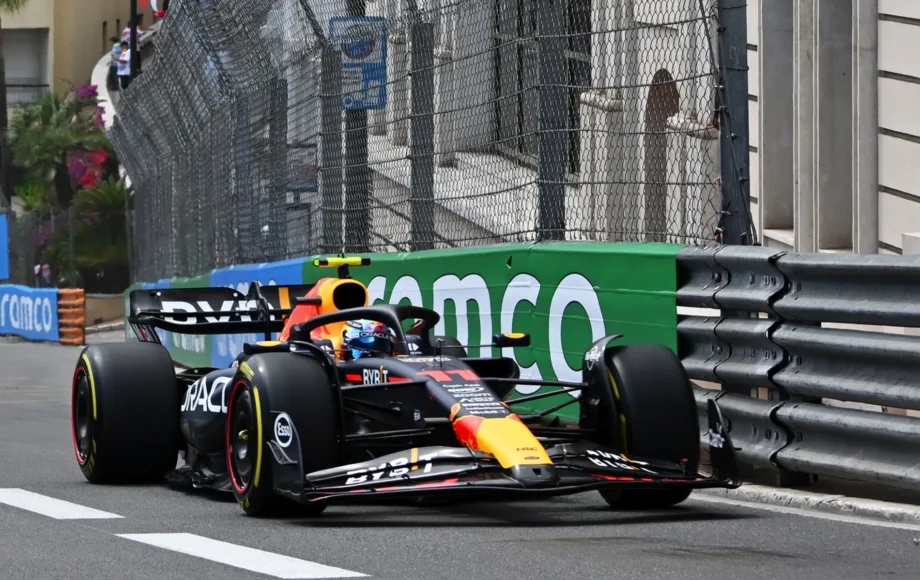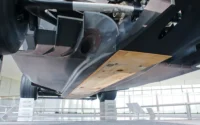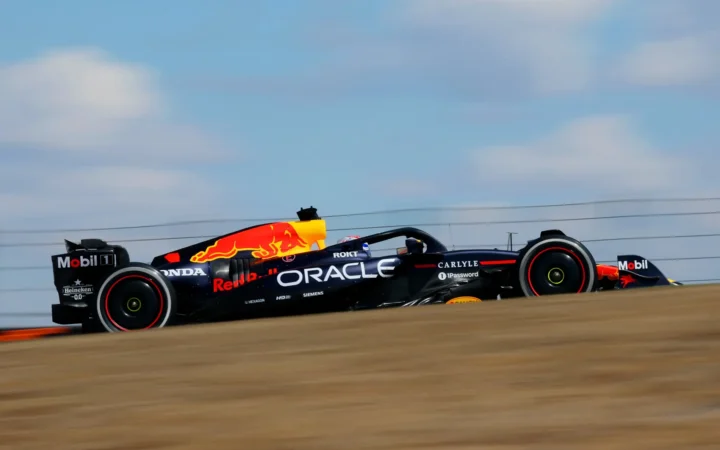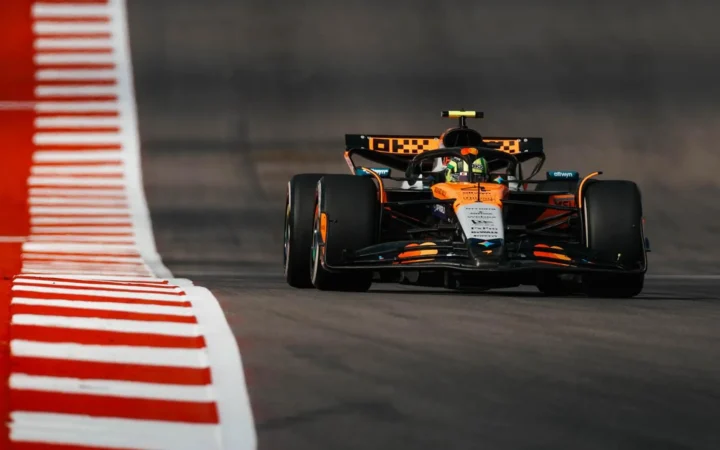Formula 1 is about speed, setting the fastest pace lap after lap. However, with speed comes danger, so the FIA and Formula 1 bodies continuously examine and evolve on-track safety for its drivers and spectators.
What to know
- Initially intended for highways and roads, these barriers quickly became popular in motorsports.
- Made from corrugated steel sheets, these barriers are designed to absorb the kinetic energy of a high-speed crash.
- The posts securing the barrier to the ground are deliberately spaced at specific intervals, granting the entire barrier system flexibility on impact.
One key area of driver and spectator safety is the humble barrier system. Go to any race, and you’ll see these around key sections of the track. You’ll probably have even encountered one on your drive to the circuit. But what is the Armco barrier, and why has it revolutionised track safety?
What is Armco in F1?
The name “Armco” comes from the American Rolling Mill Company, which pioneered a type of steel barrier in the early 20th century. Initially used on highways and roads, these barriers quickly became popular in motorsports, as they are extremely effective at helping to prevent cars from leaving the track.
In Formula 1, cars routinely push speeds above 200 miles per hour, so the FIA are keen to keep drivers safe when they suffer an accident. It’s difficult for today’s fans to imagine, but there was a time when the sport did not benefit from the rigorous safety measures and rules that are now standard.
In the earlier years of Formula 1, circuits were dangerous, with minimal runoff areas and unprotected edges or using the humble hay bale as a barrier—crashes, which were not uncommon, led to many fatalities. With rudimentary helmets and the lack of proper harness belting drivers in the car, drivers were very vulnerable when these accidents happened. So, the introduction of Armco barriers brought a significant shift towards creating a safer racing environment.
Armco Barriers to the rescue
As cars became faster and more powerful, protective technology became more urgent. Cars were reaching staggering speeds, making every crash potentially life-threatening. The sport needed a solution that could act as a safeguard, minimising the potential for severe injuries or fatalities. Enter the Armco barrier system. Their introduction wasn’t just about adding a protective layer around the track; it was part of a broader shift in the sport’s attitude towards safety. Made from corrugated steel sheets, these barriers absorb the kinetic energy of a high-speed crash.
The effects of introducing these barriers were immediate. While not entirely eliminating risks—no single measure can—these barriers significantly reduce the severity of many accidents. Drivers who might have otherwise sustained life-ending crashes were now walking away from crashes with minor bruises or even unscathed, all thanks to innovations like the Armco barriers.
How does Armco work?
With their corrugated design, Armco barriers are a familiar sight on public roads and racetracks. But beneath their simple appearance lies a sophisticated design that enhances safety. Made from corrugated steel sheets, this corrugation wave-like pattern on the surface provides flexibility and strength.
When a vehicle, like an F1 car, collides with an Armco barrier, there’s a sudden and immense energy transfer. The corrugated design allows the barrier to flex and not remain rigid. Instead, it deforms, absorbing a significant portion of the impact energy. This absorption reduces the G-forces transferred to the driver. A lower G-force reduces the risk of injury to the driver.
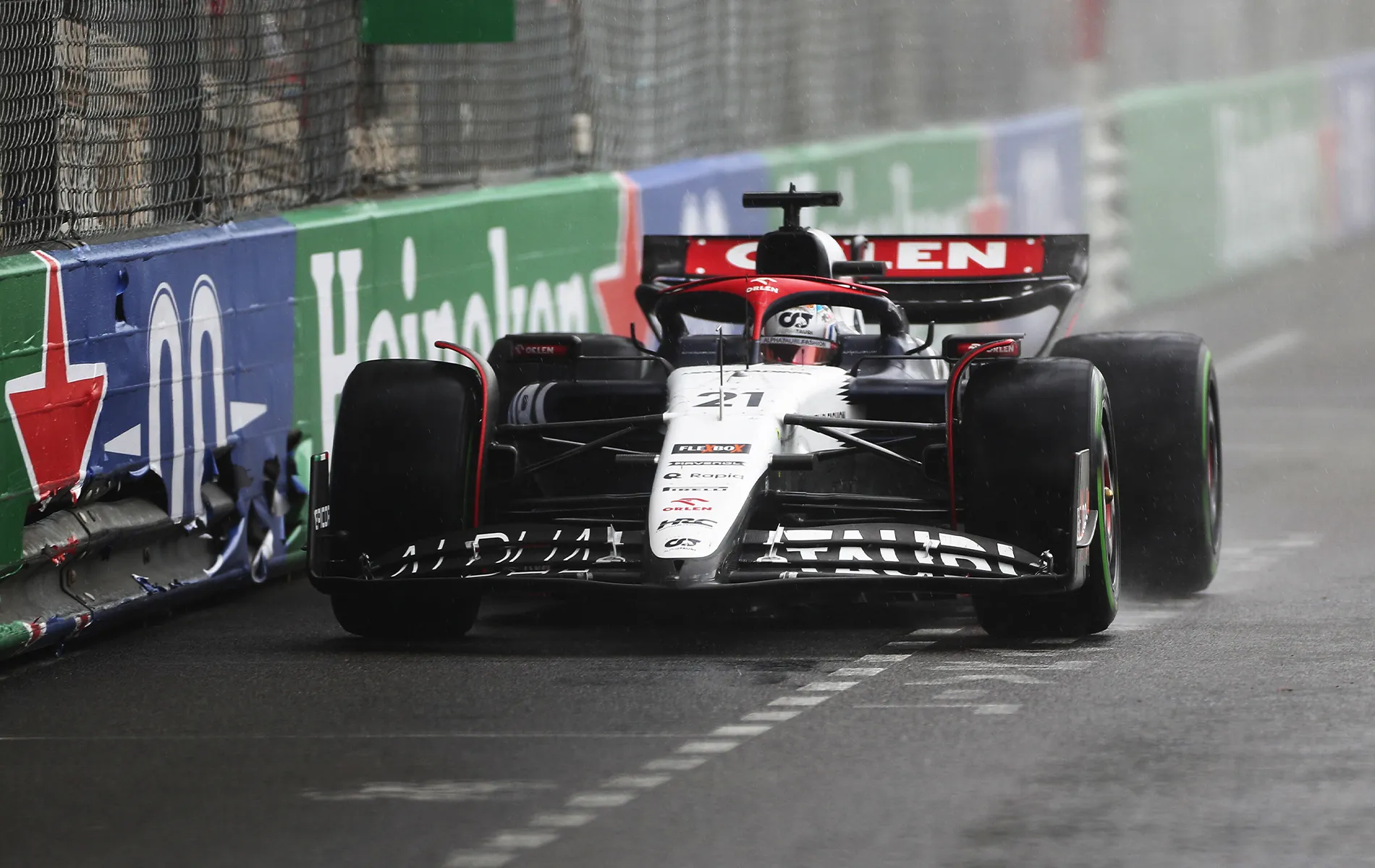
Armco mounting and flexibility
The way Armco barriers are installed also enhances their safety. They aren’t simply placed on the track; they are anchored securely using posts. These posts can be embedded deep into the ground or firmly fixed onto a concrete base, stabilising the barrier.
However, stability doesn’t mean rigidity. The posts are deliberately spaced at intervals to give the entire barrier system flexibility. This spacing means that when a barrier section is impacted, adjacent sections can flex and give slightly. This flexibility is crucial in preventing a car from rebounding too far back onto the track. Without this give, a car might bounce back from the barrier onto the track with significant force, potentially leading to secondary collisions with other cars and drivers.
Evolution and improvements
While the Armco barrier was pivotal in enhancing track safety, it can never eliminate all on-track dangers. Over the years, cars have been wedged or trapped under these barrier systems or subjected to violent rebounds after a crash.
To address these concerns, F1 and other motorsports began incorporating modifications by introducing higher barriers to prevent cars from getting underneath or over. Tyre barriers are also used, strapped together, and placed in front of the Armco barriers, especially in high-impact zones, to add cushioning, absorb energy, and prevent the car from reaching the steel directly.
Like Armco barriers, the much newer TecPro Barriers have been a safety revolution. Made from foam and polyethene, TecPro barriers offer greater energy absorption and decreased car rebounding when used alongside the Armco system.
Other F1 safety systems
While Armco barriers still exist in many racing circuits, Formula 1 is always searching for better safety systems. Like introducing the more modern TechPro Barries, the F1’s governing bodies have introduced systems like SAFER Barriers. The “Steel and Foam Energy Reduction” barrier, commonly seen in oval racing, has been adopted in some F1 circuits. It’s a step up from the traditional Armco, made of steel tubes backed by foam panels. This design adds even better energy absorption during a crash.
Run-off areas have also been made larger. These are the vast, expansive areas you might see on TV that go beyond the track limits and are filled with gravel or other materials. These areas slow down a car that’s gone off the track, hopefully stopping it before hitting a barrier.
On the car, we saw the Halo System added in 2018. A three-pronged device that acts as a protective ring above the driver’s head is another commitment to driver safety. Since its introduction, it’s undoubtedly saved many drivers’ lives, as well as prevented severe injuries, by protecting drivers from large debris.
Frequently asked questions about Armco
What height is an Armco barrier?
There isn’t a fixed height for Armco barriers. The track’s design and the anticipated speeds of the cars tend to set the height of these at each sector of a circuit. For example, in areas where there’s a higher probability of cars going off-track or where they’re moving at greater speeds, the barriers might be taller to offer better protection.
Why is it called Armco barrier?
The term “Armco Barrier” can be traced back to its manufacturer. The barrier was first produced by a company named American Rolling Mill Company, which recognised the importance of safety on both roads and racetracks. Armco introduced them as “Armco Safety Barriers,” but over time, as they became widely adopted, they were simply referred to as “Armco Barriers.”
Do all tracks have Armco?
While Armco barriers are heavily used at circuits on the F1 calendar, they are not used at every track. Different circuits have unique requirements and challenges. Some narrower street tracks tend to opt for alternatives like concrete walls, TecPro barriers, or combinations of multiple barrier systems. The decision often revolves around the track’s specific layout.
For more F1 Terms, check out our F1 Glossary, covering everything from DRS and G-force to oversteer, slipstreaming, tyre warmers, and turbulence. This guide offers clear explanations of the most frequently used F1 terms. You’ll be speaking the language of Formula 1 like a seasoned fan in no time.
Seen in:

